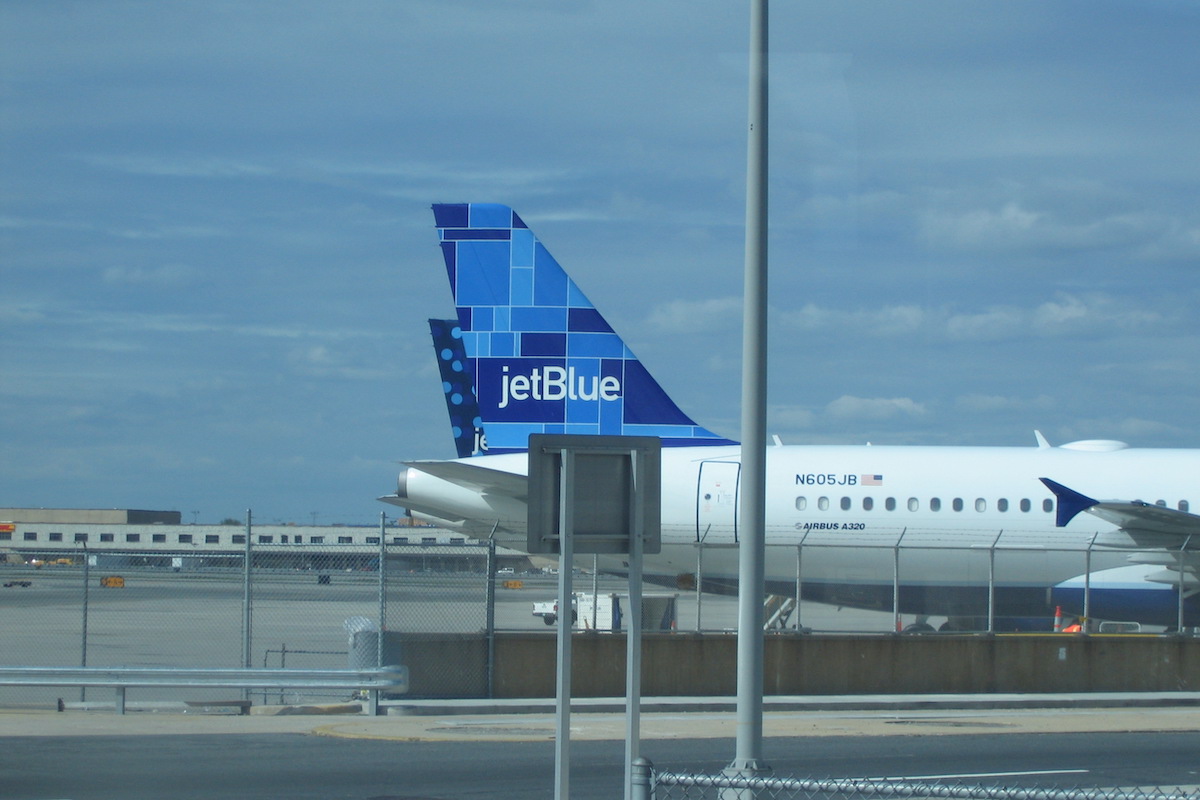Skift Take
Travelers may yet be forced to trade high-speed wireless data for cancelled flights with JetBlue CEO Robin Hayes warning that the industry faces more potential 5G wireless disruptions this year. But that isn't stopping JetBlue from moving forward with ambitious growth plans.
U.S. airlines may not be out of the the 5G wireless mire yet. At least that’s the view of JetBlue Airways CEO Robin Hayes who warned Thursday that further disruptions are possible as the new high-speed wireless network continues to roll out across the country.
“We can’t assume that we are completely out of the 5G woods yet,” he said during the New York-based carrier’s fourth-quarter results call. Hayes described the current process as “iterative” and expressed optimism that the U.S. Federal Aviation Administration (FAA), Federal Communications Commission (FCC), airlines, and wireless companies are now communicating about the new technology and working to eliminate any safety risks.
But operational issues remain despite the work. Some of JetBlue’s Embraer E190 jets are unable to operate in limited visibility conditions at certain airports — including some unnamed major ones — warned Hayes. This will impact a “very low percentage of flights,” he added.
U.S. airlines narrowly averted major disruptions last week when telecom companies agreed to voluntarily delay turning on 5G wireless transmitters near certain airports. Many fear that the technology could interfere with the radio altimeters, which tell pilots a plane’s altitude, on many aircraft. Roughly 90 percent of the U.S. commercial aircraft fleet had been approved for operations near 5G transmitters as of Thursday, according to the FAA. Missing from that list are many regional aircraft, including the Embraer ERJ-145 that is common at both American Airlines and United Airlines.
However, as with JetBlue’s E190s, headline approval for 5G operations is not as broad as it may appear. Not every carrier has gone through all of the steps necessary to certify every “approved” aircraft to operate in bad weather near transmitters. And this is causing cancellations. On Monday, Alaska Airlines cancelled all of its flights into and out of Paine Field near Seattle due to weather and 5G interference.
Hayes’ comments came a week after American CEO Doug Parker optimistically said that he did not see “any material disruption going forward” from 5G.
Northeast growth
5G may be an operational issue that’s here to stay but it has not derailed JetBlue’s growth plan. The airline maintains its ambitious expansion plans, particularly in the northeastern U.S., with an aim to fly 11-15 percent more capacity this year than in 2019.
Much of JetBlue’s growth is part of its controversial alliance with American that launched last year. Despite a Department of Justice challenge, the airline plans to grow at the three main New York airports — JFK, LaGuardia, and Newark — to roughly 300 departures this year. JetBlue operated up to 217 departures from the three airports during its peak summer schedule in 2019, according to Cirium schedules.
“We expect sequential month-on-month improvement leading to a profitable [second quarter] and a very strong summer peak,” said JetBlue President Joanna Geraghty on Thursday. The outlook follows what will be a first quarter dominated by the Omicron variant, which forced the airline to cut planned capacity by five percentage points. JetBlue expects capacity to be down 1 percent to up 2 percent in the first quarter compared to 2019.
Neither Geraghty nor another JetBlue executive commented on the pending DOJ challenge to its alliance with American. Executives have previously defended the alliance and, in November, American and JetBlue asked a court to dismiss the suit.
Another area where JetBlue will continue to grow is across the Atlantic. After landing in London for the first-time ever last August, the carrier ended the year operating up to two daily flights — one to Heathrow and another to Gatwick — from New York JFK. JetBlue is “very pleased” with the performance of those flights, as Head of Revenue and Planning Dave Clark put it Thursday, and stands by plans to add a new flight between Boston and London later this year. Executives were mum on what London airport the Boston flight would use.
“Certainly for this year, I don’t see us moving beyond London,” said Hayes of JetBlue’s European ambitions. “At some point, we will look at other markets in Europe where we think we can succeed in.”
The airline has orders for 26 long-range Airbus A321neo jets that will allow it to expand to more destinations in Europe.
Supporting JetBlue’s growth is the continued return of travelers. While leisure demand remains robust, the airline anticipates the business travel recovery to pick up from the second quarter — or from April. Roughly half of JetBlue’s pre-pandemic corporate business had returned prior to the arrival of Omicron in December, said Geraghty.
And the Numbers
JetBlue lost $129 million on $1.8 billion in revenues in the fourth quarter. Revenues were down 9.7 percent compared to 2019 in-line with its previous guidance.
For the full year, the airline lost $263 million including an $833 million benefit from federal coronavirus aid and other one-time items. Revenues were down a quarter year-over-two-years to just over $6 billion.
Revenues from JetBlue’s expanding suite of travel products, including JetBlue Vacations and Paisly, jumped 50 percent from 2019 to $45 million, said Hayes. The airline expects a continued expansion and penetration of these services to drive a $100 million contribution in 2022.
Looking forward, JetBlue forecasts an 11-16 percent year-over-three-year decline in first quarter revenues on account of the Omicron variant.
The Daily Newsletter
Our daily coverage of the global travel industry. Written by editors and analysts from across Skift’s brands.
Have a confidential tip for Skift? Get in touch
Tags: earnings, jetblue airways
